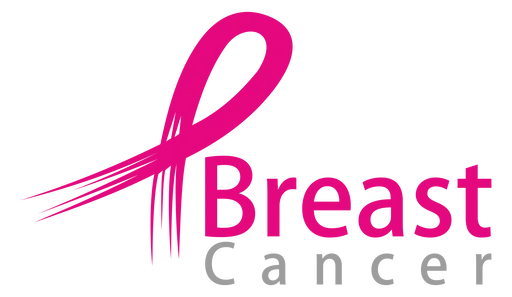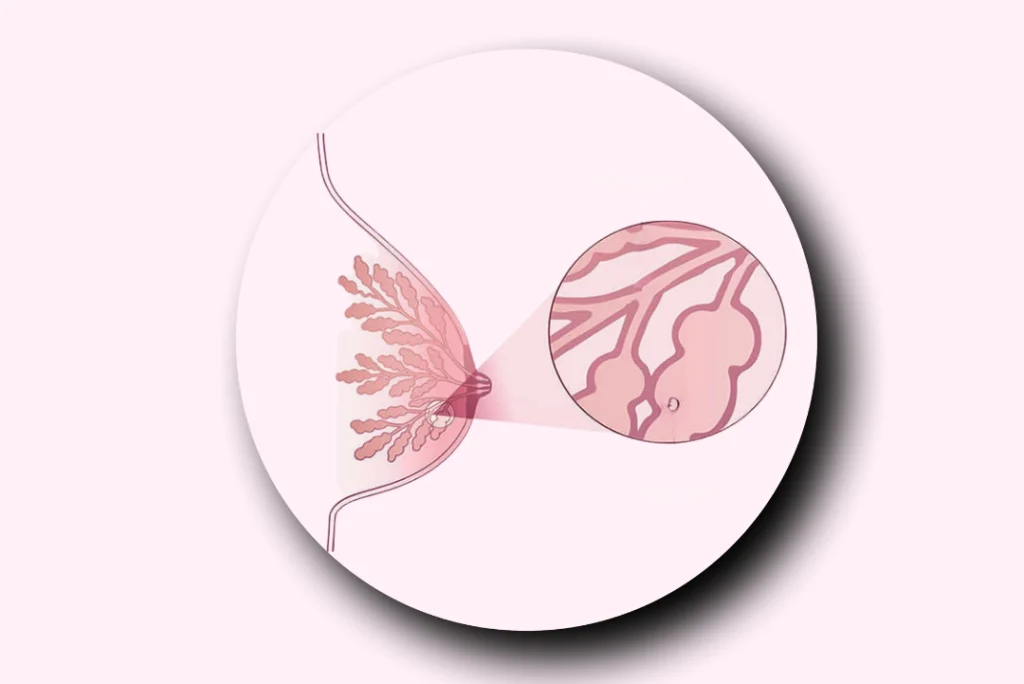Invasive ductal carcinoma (IDC) in chennai is the most common type of breast cancer, making up nearly 80% of all breast cancer diagnoses. IDC begins in the milk ducts of the breast, where abnormal cells grow and eventually break through the duct wall to invade surrounding breast tissue. From there, the cancer can spread to nearby lymph nodes and potentially other areas of the body. The seriousness of IDC underscores the importance of early detection and appropriate treatment.
If you or a loved one has been diagnosed with IDC, understanding your condition, treatment options, and prognosis can help in navigating this journey. In this blog, we will explore everything you need to know about invasive ductal carcinoma, including symptoms, diagnosis, and treatment strategies, as well as an in-depth look at the aggressive subtype called triple-negative invasive breast cancer in chennai. We’ll also compare IDC with non-invasive breast cancer treatment options to provide a complete picture of breast cancer care.
What is Invasive Ductal Carcinoma?
Invasive ductal carcinoma (IDC) in chennai occurs when abnormal cells form in the lining of the milk ducts, a network of tubes in the breast that carry milk to the nipple. In its initial stages, these cancerous cells are confined within the ducts, but as the disease progresses, they break through the walls of the ducts and invade nearby breast tissue. This invasive nature distinguishes IDC from non-invasive breast cancer, where cancerous cells remain confined within the ducts or lobules. Because IDC can spread beyond the breast to other areas of the body, including the lymphatic system and distant organs, early detection is critical. Regular screenings and prompt diagnosis significantly improve the chances of successful Invasive Ductal Carcinoma treatment.
How Is Invasive Ductal Carcinoma Diagnosed?
Accurate diagnosis is the first step in invasive ductal carcinoma treatment. A combination of the following methods ensures precise detection:
- Mammography: A routine screening tool that identifies abnormal masses.
- Ultrasound and MRI: Used for further evaluation, especially in dense breast tissue.
- Biopsy: The gold standard for confirming an IDC diagnosis. Tissue samples are analyzed to determine hormone receptor status, HER2 status, and other characteristics.
- Genomic Testing: Helps assess the aggressiveness of the tumor and predict the likelihood of recurrence.
Key Diagnostic Steps in Bullet Points:
- Clinical examination of lumps or abnormalities.
- Imaging tests like mammography and ultrasound.
- Biopsy to confirm the presence and type of cancer.
- Staging tests to evaluate the spread of cancer.
Types of Invasive Ductal Carcinoma
IDC is not a one-size-fits-all diagnosis. Understanding the specific type is crucial for determining the most effective treatment approach:
- Hormone Receptor-Positive IDC: These cancers grow in response to hormones like estrogen or progesterone. Hormonal therapies are often effective.
- HER2-Positive IDC: This subtype is driven by an overexpression of the HER2 protein, treated with targeted therapies like trastuzumab.
- Triple-Negative Invasive Breast Cancer: This aggressive form lacks receptors for estrogen, progesterone, and HER2, making it more challenging to treat. Chemotherapy is often the cornerstone of treatment.
Non-Invasive Breast Cancer and IDC Overlap: In some cases, IDC may coexist with ductal carcinoma in situ (DCIS), a non-invasive breast cancer precursor.
Symptoms of Invasive Ductal Carcinoma
One of the challenges in diagnosing IDC is that it often does not present noticeable symptoms in its early stages. However, as the cancer progresses, some common symptoms to look out for include:
- A lump in the breast or armpit (usually hard and painless)
- Changes in the size, shape, or appearance of the breast
- Dimpling or thickening of the breast skin
- Inverted nipple or unusual nipple discharge
- Swelling in parts of the breast or the whole breast
- Pain in the breast or nipple
These symptoms are not exclusive to IDC and may be caused by benign conditions. Nonetheless, any of these warning signs should prompt a visit to your doctor for further evaluation. Early detection is the best way to ensure successful Invasive Ductal Carcinoma treatment.
Risk Factors for Invasive Ductal Carcinoma
Several factors can increase the risk of developing IDC. While having these risk factors doesn’t guarantee that you will develop breast cancer, awareness can help you and your healthcare provider make informed decisions about screening and prevention.
- Age: Most invasive breast cancers, including IDC, occur in women over the age of 55.
- Family History: A family history of breast cancer, particularly in close relatives, increases your risk.
- Genetics: Mutations in genes like BRCA1 and BRCA2 increase susceptibility to IDC and other cancers.
- Hormone Exposure: Extended exposure to estrogen and progesterone, such as through hormone replacement therapy or birth control, may elevate the risk.
- Radiation Exposure: Those who have undergone radiation treatments, particularly to the chest, may have an increased risk of developing breast cancer.
- Lifestyle Factors: Obesity, lack of exercise, excessive alcohol consumption, and a poor diet can contribute to breast cancer risk.
Diagnosis of Invasive Ductal Carcinoma
If you or your doctor suspect the presence of IDC, several diagnostic tests can be performed to confirm the diagnosis:
- Mammogram: A mammogram is the most commonly used screening tool to detect breast cancer. It involves taking x-ray images of the breast to identify any unusual lumps or calcifications that may indicate the presence of IDC.
- Ultrasound: Breast ultrasounds can help differentiate between solid masses (such as tumors) and fluid-filled cysts, providing further clarity on the nature of a breast lump.
- Biopsy: If imaging tests suggest cancer, a biopsy will be performed. During this procedure, a small sample of breast tissue is removed and analyzed under a microscope to check for cancerous cells.
- MRI (Magnetic Resonance Imaging): An MRI is often recommended for patients with dense breast tissue or for further examination when mammogram results are inconclusive. It provides detailed images of the breast tissue.
- Genetic Testing: In cases where there’s a strong family history of breast cancer, genetic testing for mutations in the BRCA1 or BRCA2 genes may be conducted to determine your risk of developing IDC.
Once diagnosed, the cancer is staged to determine its extent and how far it has spread. Staging helps guide the treatment process and offers insight into the prognosis.
Treatment Options for Invasive Ductal Carcinoma
The treatment of IDC depends on several factors, including the stage of cancer, the tumor size, and the presence of hormone receptors or HER2 proteins. Typically, IDC is treated through a combination of surgery, radiation therapy, chemotherapy, hormone therapy, and targeted therapy. The following are common Invasive Ductal Carcinoma treatment in chennai options:
1. Surgery:
Surgery is often the first line of defense in treating IDC. The two main types of surgeries are:
- Lumpectomy: Also known as breast-conserving surgery, a lumpectomy involves removing the tumor and a small margin of surrounding healthy tissue while preserving the breast.
- Mastectomy: A mastectomy involves removing the entire breast. In some cases, both breasts are removed, especially if the patient has a high risk of developing cancer in the other breast.
2. Radiation Therapy:
Radiation therapy uses high-energy beams to target and kill cancer cells that remain after surgery. It’s often recommended after a lumpectomy to reduce the risk of recurrence.
3. Chemotherapy:
Chemotherapy involves the use of drugs to destroy cancer cells throughout the body. It may be administered before surgery (neoadjuvant therapy) to shrink the tumor or after surgery (adjuvant therapy) to prevent the cancer from returning.
4. Hormone Therapy:
Hormone therapy is used for hormone receptor-positive IDC. This treatment blocks estrogen and progesterone, which can fuel the growth of certain types of breast cancer. Common hormone therapies include tamoxifen and aromatase inhibitors.
5. Targeted Therapy:
Targeted therapy focuses on specific molecules or pathways involved in cancer growth. For example, HER2-positive breast cancer can be treated with drugs like trastuzumab (Herceptin), which specifically target the HER2 protein on cancer cells.
Surgery for Invasive Ductal Carcinoma
Surgical intervention plays a pivotal role in the treatment of IDC. The type of surgery depends on the tumor’s size, location, and stage:
- Lumpectomy: Also known as breast-conserving surgery, it involves removing the tumor and a margin of healthy tissue.
- Mastectomy: Complete removal of one or both breasts. This is often recommended for larger tumors or multicentric cancers.
- Sentinel Lymph Node Biopsy: Identifies the first lymph node where cancer may have spread, minimizing the need for extensive lymph node removal.
- Axillary Lymph Node Dissection: Performed if cancer is detected in the sentinel node.
Advantages of Surgical Options:
- Effective removal of the primary tumor.
- Reduced risk of recurrence when combined with other treatments like radiation and chemotherapy.
Triple-Negative Invasive Breast Cancer in Chennai
Triple-negative invasive breast cancer (TNBC) is a subtype of IDC that is more aggressive and challenging to treat. It is called triple-negative because the cancer cells lack estrogen receptors, progesterone receptors, and excess HER2 protein. As a result, TNBC does not respond to hormone therapy or drugs that target HER2, making it more reliant on chemotherapy as the primary treatment option.
Because TNBC grows and spreads more quickly than other forms of breast cancer, early detection and aggressive treatment are critical for improving survival rates. Clinical trials and immunotherapy may also be considered for patients with TNBC who are not responding to traditional treatments.
Non-Invasive Breast Cancer Treatment in Chennai
non invasive breast cancer treatment in chennai, also known as ductal carcinoma in situ (DCIS), is confined to the milk ducts and has not yet spread to surrounding breast tissue. While it is not as aggressive as IDC, DCIS can progress to invasive cancer if left untreated.
non invasive breast cancer treatment in chennai options often include surgery (lumpectomy or mastectomy), followed by radiation therapy to reduce the risk of recurrence. Hormone therapy may also be recommended for hormone receptor-positive DCIS. Regular monitoring and follow-up are crucial to ensure that the cancer does not progress to an invasive form.
Early Detection and Screening for Invasive Ductal Carcinoma
The best way to combat IDC is through early detection. Regular breast cancer screenings are recommended for women over 40, and those with a family history of breast cancer should consider starting earlier. Common screening methods include:
- Mammograms: Annual mammograms are a crucial tool for detecting breast cancer in its early stages, especially before any symptoms appear.
- Self-Examinations: Monthly breast self-examinations can help you become familiar with your breasts and identify any changes early.
- Clinical Breast Exams: A healthcare provider can perform a breast exam during your annual checkup to detect any abnormalities.
Women at high risk of breast cancer, particularly those with genetic predispositions, may also benefit from MRI screenings alongside regular mammograms.
Conclusion
Invasive ductal carcinoma is the most common type of breast cancer, but it is also highly treatable, especially when detected early. From surgery to targeted therapy, there are numerous treatment options available depending on the stage and subtype of the cancer. Regular screening, early detection, and prompt treatment significantly improve outcomes. Whether you are facing a diagnosis of IDC, triple-negative invasive breast cancer in chennai, or even a non-invasive breast cancer treatment plan, working closely with a healthcare provider is essential.
Read also: Ductal Carcinoma In Situ (DCIS)





